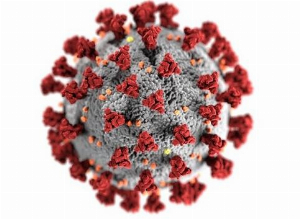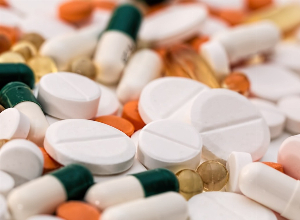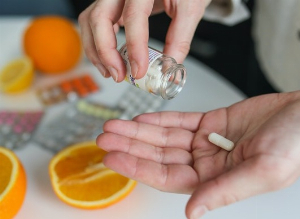COVID-19 and diabetes: Interconnected pandemics?
Published 4 Jan 2021 • By Doriany Samair
COVID-19 seems to spare no one. However, comorbidity is, at present, very much associated with the disease. Our experts have enlightened us on COVID-19 during Carenity's seventh annual Scientific Committee meeting.
What does the Carenity Scientific Committee say? What makes type 1 and type 2 diabetes risk factors in the evolution of COVID-19?

Does diabetes increase the risk of COVID-19 infection?
The current state of affairs
Diabetes is a comorbidity that is frequently associated with COVID-19. Regardless of the type of diabetes (type I or II), there are no real studies directly comparing the increased risk of infection of a diabetic patient compared to a non-diabetic. Indeed, some studies compare the severity of COVID-19 when associated with diabetes, but they do not attribute an increased risk of COVID-19 infection to diabetes, whatever the type of infection (asymptomatic, benign, severe).
Does diabetes increase the risk of developing a severe form of COVID-19?
Since April 2020, research has been advancing and many studies confirm that there is a higher risk of complications for people with diabetes.
A large international meta-analysis lists the comorbidities found in 14,558 hospitalised patients with more or less severe forms of COVID-19:
Figure 1. Comorbidities associated with COVID-19 according to an international meta-analysis (Singh AK et al. Diabetes Obes Metab. 2020)
Patients with a Sars-Cov-2 infection are prone to having first high blood pressure; second, diabetes; comes second, and third, history of cardiovascular issues. The risk for these patients to develop a severe form of COVID-19 was increased by:
1) +286% in patients suffering from chronic kidney failure;
2) +155% in patients with a history of heart diseases;
3) +66% in patients with high blood pressure;
4) +11% in patients with diabetes.
Source: Singh AK et al. Diabetes Obes Metab. 2020
It appears that cardiometabolic diseases are a major risk factor for aggravation of COVID-19. It should be noted that studies of diabetes associated with COVID-19 often refer to the risk of progression to a severe or serious form rather than simply the risk of infection.
Indeed, there is reportedly no link between the presence of diabetes and a risk of COVID-19 infection. When comparing patients with and without diabetes, and taking their age into account, the proportions of severe cases are close. However, within patients with diabetes, the percentage of severe forms of COVID-19 is higher than that of mild forms. In the event of a COVID-19 infection, patients with pre-existing diabetes are twice more likely to develop a severe form of the COVID-19. Scientists note that the more severe the clinical symptoms of COVID-19, the more chances there are that the patient is diabetic. This shows that diabetes worsens the COVID-19 infection.
Figure 2. Prevalence of severe vs. non-severe COVID-19 in patients with diabetes.
Source: Singh AK et al. Diabetes Obes Metab. 2020
Pre-existing hyperglycaemia: a predictive factor of a severe form of COVID-19?
A pre-existing hyperglycemia relates to an abnormally high glucose or blood sugar level when the patient is admitted to hospital or on an empty stomach. In several studies it has been shown to be an independent predictive risk factor for a severe form of COVID-19, or even a mortality factor.
An Italian study "Pisa Covis-19, Coppelli A et al. Diabetes Care. 2020" compared the blood sugar levels of patients with a Sars-Cov-2 infection. The study was monocentric and included 271 patients from 20 March to the 30 April 2020.
These 271 patients were divided into 3 groups:
- patients with normal fasting blood sugar levels,
- experienced diabetics whose blood sugar is more or less controlled,
- patients without diagnosed diabetes but with high fasting blood sugar levels.
The upper threshold for normal blood sugar level was set at 1.40g/L, meaning that a patient was considered hypoglycaemic if his or her blood sugar level exceeded 1.40g/L. The study shows a significant difference in mortality depending on fasting hyperglycaemia, indicating that above 1.40g/L, there is indeed an increased risk of developing a severe form of COVID-19, or even an increased risk of mortality.
In the group of patients who did not have diagnosed diabetes, the origin of the hyperglycaemia must be determined. There are several types of hyperglycaemia apart from diabetes: for example there are stress-induced hyperglycaemias, reactive hyperglycaemias and in some cases, undiagnosed diabetes can be revealed during a case of COVID-19 due to the insulin resistance it may cause.
The article suggests suggests the existence of a direct protective effect of certain oral anti-diabetic drugs on the severity of the infection, but this remains to be verified.
A Chinese study follows this hypothesis and also attributes a predictive character to hyperglycaemia. In this study, researchers included only patients with pre-existing hyperglycaemia: they were separated into 3 groups according to their fasting blood sugar levels.
None of the patients had previously been diagnosed with diabetes. The threshold was set at 1.26g/L, which is the threshold defining diabetes. The study revealed that among those with fasting hyperglycaemia, 56% have a fatal outcome from their Sars-Cov-2 infection. In this sense, fasting hyperglycaemia can be considered an independent risk factor for mortality.
How to identify predictive factors in patients with diabetes?
The supposed protective effect of oral anti-diabetic medications has been mentioned in several studies. A study done in New York proposed to examine the mortality of patients with type 2 diabetes infected by Sars-Cov-2, according to their anti-diabetic treatment (insulin therapy or oral anti-diabetic drugs). The study included 1,279 patients from March 11 to May 7, 2020.
Among these patients were:
- patients on oral anti-diabetic medications,
- patients undergoing insulin therapy,
- patients undergoing mixed treatment (insulin + oral medications).
The results showed that patients on insulin therapy have a higher risk of mortality as compared to those on oral anti-diabetic medications, whose risk is lower. Patients on a mixed treatment (insulin + oral anti-diabetic drugs) have an intermediate risk.
Insulin is not implicated in increasing the risk of mortality. It should be remembered that insulin is a natural hormone that is continuously secreted in healthy individuals and regulates blood sugar levels.
A possible explanation for the higher mortality risk in patients on insulin therapy in the New York study would be that they have a profile of high-risk patients. Insulin therapy is indeed recommended as a last resort in patients with type 2 diabetes, after resistance to oral anti-diabetic drugs.
The results could therefore be explained by a more complex initial clinical picture in patients on insulin. These patients tend to be subject to more comorbidities and complications than others, due to their older onset diabetes. Nevertheless, the hypothesis of a protective effect of oral anti-diabetic medications cannot be excluded but remains to be proven.
What role does diabetes play in immune system deterioration?
The underlying existence of type 1 or 2 diabetes seems to alter immune system function.
Indeed, it was demonstrated in 2003 that diabetes was associated with an increased risk of SARS (caused by Sars CoV-1): patients with diabetes were 3 times more likely to develop a severe form at that time. Additionally, in 2009, diabetes was directly linked to a risk of a severe form of H1N1 (swine flu) and increased the risk for a patient to go into intensive care by 3 to 4 times.
It is important to understand that a person with diabetes does not have a greater risk of being infected (contrary to what we have heard during this crisis), but that his or her risk of developing a severe form of COVID-19 is multiplied.
Doctors and researchers are well aware of diabetic patients' high susceptibility to infection and have studied this phenomenon in medical schools. Exposure of the body's tissues to chronic hyperglycaemia (poorly controlled diabetes) exposes patients to a decline in immune response, thus contributing to the onset of infection. The causes behind this phenomenon are not entirely understood, but several avenues have been explored: a team of researchers has identified a deficiency of a particular type of immune cells in patients with type 2 diabetes. Most particularly, these patients are deficient in a subtype of lymphocytes (white blood cells) involved in the elimination of infectious agents and cancerous cells.
Was this article helpful to you?
Share your thoughts and questions with the community in the comments below!
Take care!
Sources:
The article is based on a literature review by University Professor Denis Raccah, head of the endocrinology department and hospital practitioner at Marseille University Hospital and member of Carenity's Scientific Committee.
- “Le diabète responsable d’immunodépression” - INSERM
- “L’insuline” - Fédération des diabétiques
- "Prevalence of co-morbidities and their association with mortality in patients with COVID-19: A systematic review and meta-analysis" - Singh AK et al. Diabetes Obes Metab. 2020
- "Hyperglycemia at Hospital Admission Is Associated With Severity of the Prognosis in Patients Hospitalized for COVID-19: The Pisa COVID-19 Study" - Coppelli A et al. Diabetes Care. 2020
- "Preadmission Diabetes-Specific Risk Factors for Mortality in Hospitalized Patients With Diabetes and Coronavirus Disease 2019" - Agarwal S et al. Diabetes Care 2020

 Facebook
Facebook Twitter
Twitter



